
Now that the elections are over and all that is good or true in the world has been destroyed, I’m trying to shift my focus back to educational stuff. You know, the things that at one time seemed important enough to shape the title of this blog?
A few months ago, I started by blogging about Supreme Court cases delineating the relationships between religion and public schooling. In order to use some of the case summaries in class, I started editing and reformatting them afterwards. Then I figured since the work was already being done, and this effort at providing classroom resources in PDF format was already underway… why not just post them as I go?
Here’s my in-progress summary of cases involving church/state issues in relation to public schooling – and a few which aren’t.
Building A “Wall of Separation” (Faith & School) – Brief background to the First Amendment and the Bill of Rights and Jefferson’s Letter to the Danbury Baptists which introduced the phrase “a wall of separation between Church & State.”
Everson v. Board of Education (1947) – It’s OK for the state to reimburse parents for transportation costs of getting their children to school, whether public or private, sectarian or secular.
McCollum v. Board of Education of School District (1948) – The use of public school facilities by religious organizations to give religious instruction to school children violates the Establishment Clause of the First Amendment. This does not prohibit teaching about religion, or schools allowing religious groups to use their facilities outside of school ours (as long as they do so equitably). It does prohibit coercing students into religious instruction as part of the school day.
Engel v. Vitale (1962) – The state can NOT require – or even promote – prayer in public schools as part of the school day.
Abington v. Schempp (1963) – The state can NOT require or promote the reading of Bible verses or recitation of the Lord’s Prayer as stand-alone activities during the school day. (Studying the Bible or the Christian religion as part of history, literature, etc., still perfectly appropriate.)
Board of Education v. Allen (1968) – It’s OK for the state to provide textbooks free of charge to all secondary students (Grades 7 – 12), including those in private schools. An important part of the Court’s reasoning in this case was that the textbooks constituted aid directly to students, rather than institutions.
Walz v. Tax Commission of the City of New York (1970) – Not specifically a ‘religion in schools’ case. It’s OK for states to offer property tax exemptions for groups serving the public good – even if they’re religious in nature.
Lemon v. Kurtzman (1971) – State aid to sectarian institutions such as private Catholic schools violates the Establishment Clause and is unconstitutional. This case also established “The Lemon Test” – “Three such tests may be gleaned from our cases. First, the statute must have a secular legislative purpose; second, its principal or primary effect must be one that neither advances nor inhibits religion… finally, the statute must not foster ‘an excessive government entanglement with religion’…”
Wisconsin v. Yoder (1972) – The state’s interest in an educated citizenry is outweighed by the right of the Amish to maintain their faith and their communities. Parents may pull their children out of public schooling for religious reasons once they turn 16 – especially given the Amish track record for becoming productive, well-behaved members of society. The Court had previously attempted to distinguish between regulating beliefs and regulating behavior – in this case, the two were the inseparable. They instead introduced the idea of “balanced interests’ – the state’s interest in an educated populace vs. the parents’ or individual’ interest in pursuing their faith as they see fit.
Meek v. Pittenger (1975) – It’s unconstitutional for the state to provide materials and equipment for non-public schools, or to pay for support services for students at those schools. As in Allen, however, textbooks (for traditional subjects) were fine.
Stone v. Graham (1980) – State cannot require schools to post the Ten Commandments in public school classrooms, even if paid for by private money.
Mueller v. Allen (1983) – It’s OK for the state to let parents deduct expenses related to “tuition, textbooks, and transportation” for their children, regardless of whether their child attends public or private school, even if sectarian. Significantly, the Court determined that as long as the intent is secular, it’s OK for the effect to significantly favor parents sending their kids to religious schools. This case is considered one of the three foundational cases leading up to vouchers.
Wallace v. Jaffree (1985) – While a “moment of silence” is fine, any nudging towards prayer, especially with teacher participation, is unconstitutional. This issue will come up again.
Aguilar v. Felton (1985)– A NYC program sending public school teachers into parochial schools to provide extra help for disadvantaged children was ruled an unconstitutional “entanglement” of church and state, thus violating the Establishment Clause. This ruling was overturned a decade later in Agostini v. Felton (1997).
Witters v. Washington Department of Services for the Blind (1986) – A state agency which provided assistance to blind students pursuing education or job training may continue to do so even if the education/profession being pursued is religious in nature. This case didn’t involve public education, but did nudge along an understanding of the law which certainly does. This case is considered one of the three foundational cases leading up to vouchers.
Hazelwood v. Kuhlmeier (1988) – Students produced two articles for the school newspaper which dealt with teenage pregnancy and in which students at the schools shared their firsthand experiences, including various conflicts involving their families. The school principal determined the subject matter to be inappropriate and efforts to protect the girls’ identities insufficient, and the stories were pulled. Students protested that their First Amendment rights were being violated. The Supreme Court eventually ruled 5-3 that the principal had the right to make this decision because the newspaper was a product of the school and created as part of a journalism class, for which students were receiving credit and a grade.
Lee v. Weisman (1992) – It’s unconstitutional for schools to have clergymen offering prayers at graduation ceremonies, no matter how general or brief the prayers. Even if not technically ‘required’, or even on school property, participation is still coerced and thus a violation of the “establishment clause.”
Zobrest v. Catalina Foothills School District (1993) – Students attending private sectarian schools are still entitled to support services from public schools – in this case, a sign-language interpreter for a deaf student. This case is considered one of the three foundational cases leading up to vouchers.
Agostini v. Felton (1997) – Overturned Aguilar v. Felton (1985). It was no longer considered a violation of the Establishment Clause for a state-sponsored education initiative to send public school teachers into religious schools, so long as reasonable steps were taken to minimize “entanglement.”
Zelman v. Simmons-Harris (2002) – Seminal Supreme Court Case in which education improvement efforts undertaken by the State of Ohio, and which included school vouchers as part of the while, were determined to be constitutional in terms of the Establishment Clause. I’ve written several posts about this one, starting with the background, the decision, and the majority opinion. I’ve also summarized more recent court decisions at various levels dealing with vouchers and other “school choice” variations.
The Ten Commandments (Part One) – Background, the “Lemon Test,” some cases which made the news but not the Supreme Court Docket, and two that did – McCreary County v. ACLU of Kentucky (2005) and Van Orden v. Perry (2005).
The Ten Commandments (Part Two) – Recap of Part One, Pleasant Grove v. Summum (2009), Green v Haskell County Board of Commissioners (2009), and Felix v. Bloomfield (2014).
There will be more. I’m looking at “moment of silence” cases, some other “prayer in schools” situations, and of course that “vouchers” case I’ve been building up to for awhile. If you’re into that sort of thing, check back soon.

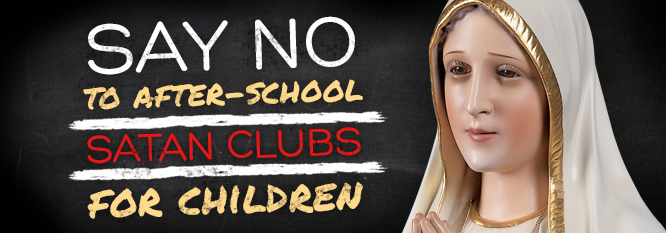
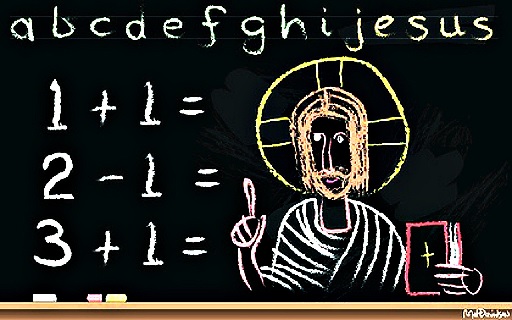 No team teaching. No mixed activities. One wonders if perhaps eye contact with anyone wearing an angel pin was discouraged. Remedial instruction could only take place in rooms bereft of religious symbols or imagery, despite the fact that students had been surrounded by sectarian materials the entire day leading up to these lessons.
No team teaching. No mixed activities. One wonders if perhaps eye contact with anyone wearing an angel pin was discouraged. Remedial instruction could only take place in rooms bereft of religious symbols or imagery, despite the fact that students had been surrounded by sectarian materials the entire day leading up to these lessons. 
 The majority opinion, written by Justice Sandra Day O’Connor, revisits the reasoning used to decide Aguilar twelve years before, including – once again – our famous “Lemon Test.” She also discusses numerous other cases whose outcomes shape the Court’s reasoning in current circumstances.
The majority opinion, written by Justice Sandra Day O’Connor, revisits the reasoning used to decide Aguilar twelve years before, including – once again – our famous “Lemon Test.” She also discusses numerous other cases whose outcomes shape the Court’s reasoning in current circumstances.  Notice that the argument is as much about professionalism and practicality as it is the finer points of constitutional law:
Notice that the argument is as much about professionalism and practicality as it is the finer points of constitutional law: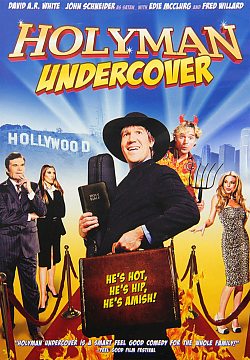 Justice Souter wrote a fascinating dissent, which several of the other justices joined. His argument is less pragmatic and more big picture. I particularly like this part:
Justice Souter wrote a fascinating dissent, which several of the other justices joined. His argument is less pragmatic and more big picture. I particularly like this part: So far we’ve done a brief overview of the concept of a ‘
So far we’ve done a brief overview of the concept of a ‘ Evangelicals were emboldened and the media and courts demonized as liberals – disgusting and dishonorable, both deceived and deceptive. They were dangers to the nation and everyone in it. Reagan wasn’t evil, at least by modern standards, but he did epitomize a sort of American Exceptionalism in Book-of-Revelation Sauce. The passion and self-righteousness of Ronnie and his adherents pre-empted reason, law, or precedent.
Evangelicals were emboldened and the media and courts demonized as liberals – disgusting and dishonorable, both deceived and deceptive. They were dangers to the nation and everyone in it. Reagan wasn’t evil, at least by modern standards, but he did epitomize a sort of American Exceptionalism in Book-of-Revelation Sauce. The passion and self-righteousness of Ronnie and his adherents pre-empted reason, law, or precedent.  Jaffree’s concerns stemmed not from abstract constitutional issues, but from his kindergartener being targeted by other kids for not participating in the prayers. His five-year-old was essentially bullied for not falling into line with state-mandated religious activities.
Jaffree’s concerns stemmed not from abstract constitutional issues, but from his kindergartener being targeted by other kids for not participating in the prayers. His five-year-old was essentially bullied for not falling into line with state-mandated religious activities.  And yes, there comes a time in life – even public school life – where students must be expected to grow up and accept that not everything works the way they want it to and not everyone is nice. We can’t and shouldn’t stop kids from ever saying an unkind word to one another.
And yes, there comes a time in life – even public school life – where students must be expected to grow up and accept that not everything works the way they want it to and not everyone is nice. We can’t and shouldn’t stop kids from ever saying an unkind word to one another.

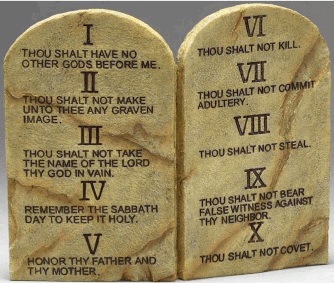 On November 17, 1980, the Supreme Court announced its decision in Stone v. Graham – a case involving the required posting of the Ten Commandments on the wall of every classroom in Kentucky.
On November 17, 1980, the Supreme Court announced its decision in Stone v. Graham – a case involving the required posting of the Ten Commandments on the wall of every classroom in Kentucky.  *Dramatic Voice* Previously, on Blue Cereal Education…
*Dramatic Voice* Previously, on Blue Cereal Education…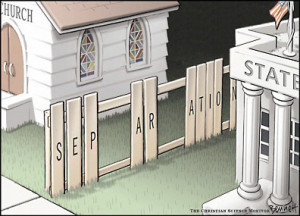
 The Court determined that while government certainly had no business promoting religion, these tax exemptions didn’t actually do that – not quite. They merely allowed the “free exercise” of groups serving the public good, without the same taxes levied on for-profits. They weren’t “establishing,” the Court said – they were stepping back and letting faithy people do faithy stuff.
The Court determined that while government certainly had no business promoting religion, these tax exemptions didn’t actually do that – not quite. They merely allowed the “free exercise” of groups serving the public good, without the same taxes levied on for-profits. They weren’t “establishing,” the Court said – they were stepping back and letting faithy people do faithy stuff. 
